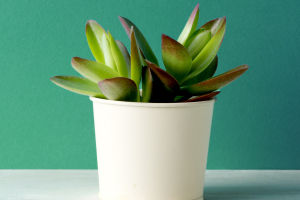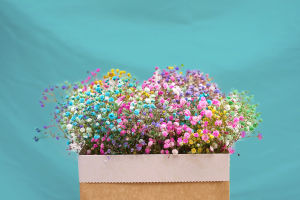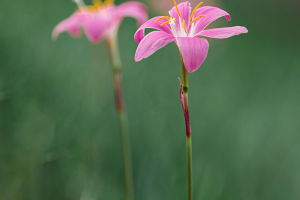Hyacinths, native to southern Europe along the Mediterranean coast and Asia, have now become a widely cultivated flower throughout the world. The wild species of hyacinths can be found in limestone areas above 2600 meters in altitude in West and Central Asia.
The Netherlands is considered the primary producer of hyacinths, which were incredibly popular in the 18th century when more than 2,000 varieties were recorded.
Initially, they were only cultivated in small numbers in botanical gardens and parks from the 1950s onwards, for use in flower beds.
It was not until the 1980s that hyacinths became a significant part of Dutch floriculture, and they were widely used in spring flower shows and potted plants for sale.
Nowadays, cultivated hyacinths are used for indoor decoration and display in homes and public places, with demand increasing year on year. However, China has not yet been able to grow them on its own, and they still need to be imported from abroad.
Hyacinths rely on nutrients, primarily stored in their bulb leaves, to flower successfully. When acquiring seed heads, it's crucial to choose ones with vibrant, firm skins devoid of any signs of disease or insect infestation.
The color of the outer layer of the seed coat can indicate the hue of the resulting flowers; for instance, a fuchsia seed coat typically yields fuchsia blooms. However, some crossbred varieties may exhibit more complex colorations, making it advisable to seek clarification from the vendor before purchase.
Upon procurement, soak the seed heads in polymyxin and allow them to dry. To break the dormancy period, store the seed heads in the bottom compartment of the refrigerator for approximately one month, facilitating smoother flowering later on.
When removing the seed heads from the fridge, transition them to a cool location for seven to eight days before sowing to acclimate them gradually to room temperature.
Hyacinths are characterized by their compact, tidy stature and elegant flower clusters, boasting rich hues and exquisite blooms. Renowned as one of the most iconic early spring flowering bulbs, they hold a prominent place among potted flower species.
These versatile plants lend themselves well to various applications, including borders, flower beds, planters, cut flower arrangements, potted displays, and ornamental water features. Beyond their aesthetic appeal, hyacinths offer additional benefits, such as filtering dust from the air and imparting a soothing fragrance that can uplift mood and alleviate fatigue. Moreover, their flowers can be utilized to extract aromatic oils, adding to their allure and utility.
It is important to note that hyacinth bulbs are toxic and can cause dizziness, stomach cramps, and diarrhea if eaten by mistake. Therefore, it is crucial to take precautions to prevent accidental ingestion by small children or animals.
Hyacinths are a popular flower species that can be cultivated throughout the world.
The Netherlands is the primary producer of hyacinths, which were first cultivated for use in flower beds and later for spring flower shows and potted plants for sale.
Nowadays, hyacinths are used for indoor decoration and display in homes and public places, with demand increasing year on year.
When purchasing seed heads, it is essential to select those with bright, firm skins that are free from disease spots and insects.
Hyacinths have low, neat plants with dignified inflorescences, rich colors, and beautiful flowers, making them an essential potted flower species suitable for various uses.
However, it is important to remember that hyacinth bulbs are toxic and can cause health problems if ingested, so precautions must be taken to prevent accidental ingestion.


